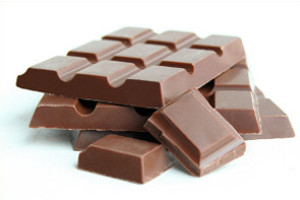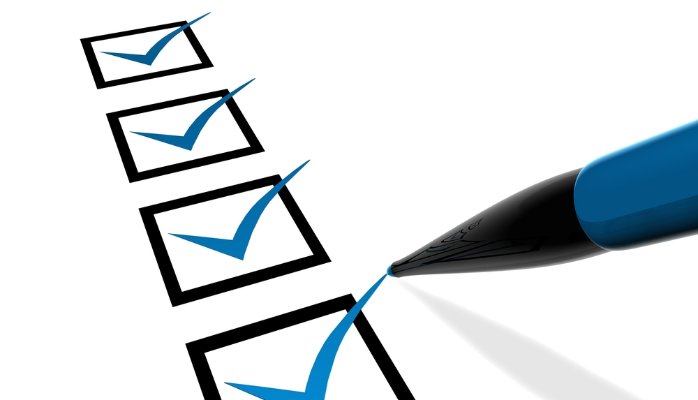For better or worse, skiing and snowboarding are gear-intensive sports, for both adults and kids. There is nothing worse than arriving at a ski resort and realizing you forget things you should have brought. Packing for a ski trip can be involved, and it is easy for leave something important at home.
Having a simple checklist of what to wear skiing, the gear you and your kids will need, and any other major equipment can help you reduce frustrating mornings on the slope, frantic runs to the ski shop, and spending buying extra gear at inflated ski-resort prices.
Packing Tips for Your Ski or Snowboard Trip
When it comes to ski trips, the biggest mistake families make is that they pack the day (or night) before leaving. This is a bad idea, as you are more likely to forget something when you rush your packing. We recommend packing two days before the trip. This will give you an extra day before leaving to think about anything you might have forgotten to pack, to double-check your packing list, and can make a run to the local ski shop to get the gear you need at regular prices. Keep in mind that it is useful to categorize your luggage into three sections. For example, warm clothing, ski equipment and the travel essentials you would bring along on any trip.
If you live in an area like Vermont, Colorado, Minnesota, Montana or other states with local ski areas, you might not be packing for a long trip. Still, it is good to have a checklist, as sometimes the gear you assumed was in your ski or boot bag somehow made its way to a kids closet, hamper, or back seat of a car.
Ski Trip Checklist
To save you from the frustration of forgetting something at home, and the costly situation of having to buy marked-up gear on at the resort, we have created a list of items that you should take and pack on a ski trip, both for you as well as your children
 Suitcase. Don’t be penny-wise and pound-foolish on your luggage. The reason is quite simple — if you buy quality luggage, it will last a lot longer. Through trial-and-error from many trips, we have found that the best approach is one individual bag– per person — with the clothing for each skier, and then one or two huge suitcases (definitely to be checked) with all of the ski helmets, boots, etc. Note that most airlines have a limit on on how large that suitcase can be. We like this one from Briggs and Reilly. They make great suitcases, provide a lifetime guarantee (we have used it, and it is truly “no questions asked”), and it is within the size limits of all airlines as of this writing.
Suitcase. Don’t be penny-wise and pound-foolish on your luggage. The reason is quite simple — if you buy quality luggage, it will last a lot longer. Through trial-and-error from many trips, we have found that the best approach is one individual bag– per person — with the clothing for each skier, and then one or two huge suitcases (definitely to be checked) with all of the ski helmets, boots, etc. Note that most airlines have a limit on on how large that suitcase can be. We like this one from Briggs and Reilly. They make great suitcases, provide a lifetime guarantee (we have used it, and it is truly “no questions asked”), and it is within the size limits of all airlines as of this writing.
Warm Clothes. This one is pretty self-explanatory. When you go to the beach in the summer, you pack your swimsuit. When you go to the mountains in the winter, you pack warmer clothes. Note that the exact level of cold depends on the season. In North America, you can usually bet that late December, January and February will be cold on the slopes. Early season, and especially late season, or often more mild and might require less warmth. When most people think of warm ski gear, they think of a heavy ski jacket (outlined below). The inner layers, such as a good ski base layer, are equally important. It’s important to insulate your kids as the temperatures can be well below freezing on the tops of a mountain and you don’t want your children to fall sick in the middle of an adventure.
Underwear top and bottom. Many companies who specialize in cold-weather active gear have underclothing especially for both adults kids to keep them warm in the roughest of weather. They are often marketed as base layers. These clothes are warm and don’t need regular washing so you can rely on them for a longer period. They are often made from wool which is a excellent body warmer. If you don’t find wool, go for a synthetic. Avoid cotton, as it becomes ineffective when wet.
Jackets and Fleeces. When it comes to skiing, don’t get too fancy. You want everyone to have a good-quality ski jacket or all-purpose active coat. It should provide great range-of-motion, be warm yet breathable, and offer some level of waterproofing in case you find yourself skiing in snow or sleet (which will happen). A hood can come very handy in the cold but some skiers and snowboarders find it to be a hassle when combined with a helmet. Having a fleece to put under the jacket can help you layer-up or layer-down depending on conditions. It is very possible to get too warm on the slopes, just as it is possible to get too cold.
Trousers/Pants. Whatever you would wear for a casual dinner out should be just fine for a ski-town. They all tend to be pretty laid-back. These are for before-and-after skiing, not for the slopes themselves.
Snowsuits. These are for the little kids as they need to keep covered in cold weather. A snowsuit can provide simplicity and full covered. The downside is that they might actually get too warm for warmer-weather skiing, when it is best to have layers you can pile on or take off.
Gloves. Ski or snowboard gloves are some of the most important things to take on a ski trip. It is good to have backup pairs because children are more likely to lose them. Be sure they are meant  for skiing, meaning they can provide warmth as well as some level of water and wind-proofing. If your gloves are on their last leg, bring a backup pair. The first thing that usually goes is the waterproofing, and wet hands are no fun. As for your kids’ ski gloves, buy good ones and then make sure your child’s name is written all over them.
for skiing, meaning they can provide warmth as well as some level of water and wind-proofing. If your gloves are on their last leg, bring a backup pair. The first thing that usually goes is the waterproofing, and wet hands are no fun. As for your kids’ ski gloves, buy good ones and then make sure your child’s name is written all over them.
Scarves. Taking a scarf is useful for your non-ski activities.
Socks. Bring one pair of ski socks for every two days of skiing. If you expect temps to be very cold, bring more as you might find it is useful to double-up on the socks in order to keep your feet warm. Also, bring whatever socks you want to wear after skiing — you will want to change out of ski socks as soon as your ski or board boots are off.
Ski Equipment. Now for the main event. You obviously want to remember your ski gear, very important so you don’t have to buy expensive equipment while on the mountain or at the resort.
- Skis. If you are renting, you can cross this off your list. If you want to buy skis, check out our pieces on the best skis for adults and for kids.
- Ski boots. Many people bring their own ski boots even if they are renting skis. We say if you have them, bring them.
- Ski poles. Note that young kids sometimes do not ski with poles.
- Snowboards. If you have a snowboard, bring it. If you are looking to buy one, we did a piece on the top snowboards out there.
- Snowboard boots. Same story as the ski boots.
- Carrier Straps. If you will have much of a walk from your lodging to the lifts, consider some carrier straps. They are also great to use while loading and unloading your vehicle. They don’t cost much and really lighten the load.
- Boot heaters. Some mechanism to keep your feet warm is useful if you expect temps to be below 32 fahrenheit or 0 celsius.
- Helmet. Don’t forget your ski or snowboard helmet. So important to protect that head, helmets are pretty universally worn at ski areas throughout North America these days.
- Goggles. A good pair of ski or snowboard goggles is very important, and sometimes we like to bring a backup pair just for good measure. If you want to go take it up a notch, you can consider getting a special pair of goggle for flat-light conditions, which will help you see the bumps on days when the sun is concealed.
- Neck Gaiter. Having something that can provide warmth for the neck and chin area is very important in keeping both you and the kiddos comfortable.
- Sunglasses. Especially if you expect milder ski days, sunglasses sometimes are better than goggles. Just make sure they are durable and wide enough to keep wind out of your eyes.
- Ski Boot Bag. You will want a good ski boot bag to carry not only your boots, but other loose items as you go to and from the slopes. This is especially important if you are skiing as part of a larger group where gear can easily get comingled together.
Of all of this equipment, the items people most often forget to pack their helmet, ski poles, or goggles. Check twice for those.
Walkie Talkie. Walkies — two-way radios — whatever you want to call them. If you have them, they can be very useful, especially for families who tend to split up during the day due to varying skill levels. Most two-way radios will work where cell phones sometimes do not, plus cell phone batteries often die on the slopes due to the cold weather.
Medicines. Bringing a small first aid kit, antibiotic creams, inhalers, and Benadryl for your kids can prove very beneficial. It can also be useful to pack some pain reliever and cold medicine just in case, to avoid a run to the local drug store. You never know what’s around the corner, so it is better to be prepared.
 Snacks. With children, you may never know when they become hungry, and slope slide food can be quite spend. It is better to pack some snacks and chocolates just in case.
Snacks. With children, you may never know when they become hungry, and slope slide food can be quite spend. It is better to pack some snacks and chocolates just in case.
Sunscreen, chapstick, and lotions. In the cold weather, skin becomes dry and starts to chap. Your lips may begin to chap in the first 24 hours. Children have very sensitive skin and bringing lotion can prove beneficial. The sun can be intense while skiing, and at high elevations has the ability to burn even in winter. Bring a small tube of sport sunscreen and keep it in your jacket pocket.
Flashlights. We are always amazed how often we need a flashlight, often for walking around a resort at night or finding your way through a condo with a power outage. Just pack a small one in your suitcase, and you’ll have it when you need it. Perhaps you have a light on your phone as well.
Credit Card and ID. You can forget nearly everything on the list above, and still survive if you have your ID and a credit card. Be sure not to forget these things, and don’t forget to let your credit card company know you will be traveling if you are usually not one to stray far from your hometown. You could be racking up charges quickly in a place where you normally are not, which is a fraud flag for the credit card companies.
Glasses or contacts. using glasses vs. contacts when you skiIf you wear glasses, consider your strategy for . Whatever your decision, just make sure you don’t overlook the need to pack for the slopes. It is easy to forget your contacts if you usually wear glasses 90% of the time.
Chargers. This goes for any trip, not just a ski or snowboard vacation, but chargers are one of the more common and annoying things to forget. Keep in mind that you might be draining your batteries a little faster due to the colder conditions, so you will want to be charging things often. Make sure you have chargers for your phones, tablets, laptop, walkie talkies, and any other ski-specific gear that you might be bringing on your trip.
Ski Pass. If you invested in a ski pass — like an Epic Pass, Ikon Pass, Max Pass, or Mountain Collective Pass, don’t forget it! Perhaps you prepaid for some discounted lift tickets and have them on your desk. You spent all of that money so that you could come out a few dollars ahead on lift tickets. And if you do not have a pass, you might want to do a quick check just to be sure that day passes will be available the day you show up to ski. They usually are, but sometimes they are rationed by the resort. Don’t forget it!
Conclusion
Skiing is a sport that involves lots of gear, and it is easy to forget something — people do it all the time. They don’t understand how important they are until they need them and don’t have them. So before going on a ski adventure, follow this checklist and leave home prepared with the right gear. It will make your slope-time more comfortable and enjoyable!

Paul Miller is the Founder of Family Skier. He is an advanced skier and has extensive experience with family travel and ski schools. An accomplished skier, he has skied in 15 states and provinces and 6 countries. In addition to FamilySkier, his writing can be found on many ski-related websites, and as curriculum for many ski clubs in North America.




